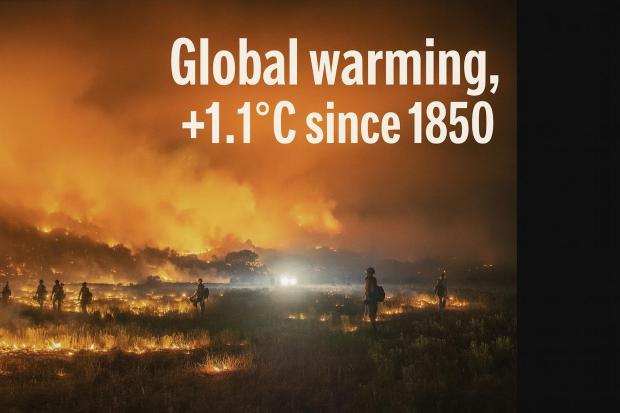
Breaking News
 Meet The Heroes That Gave Their Own Lives To Save Others During The Texas Flood
Meet The Heroes That Gave Their Own Lives To Save Others During The Texas Flood
 Scientists Reverse Parkinson's Symptoms in Mice: 'We were astonished by the success'
Scientists Reverse Parkinson's Symptoms in Mice: 'We were astonished by the success'
 America Is A Great Nation And A Work-In-Progress | Something To Stand For #60 | The Way I Heard It
America Is A Great Nation And A Work-In-Progress | Something To Stand For #60 | The Way I Heard It
 Centuries of hidden evidence: Vaccines' neurological toll revealed
Centuries of hidden evidence: Vaccines' neurological toll revealed
Top Tech News
 Insulator Becomes Conducting Semiconductor And Could Make Superelastic Silicone Solar Panels
Insulator Becomes Conducting Semiconductor And Could Make Superelastic Silicone Solar Panels
 Slate Truck's Under $20,000 Price Tag Just Became A Political Casualty
Slate Truck's Under $20,000 Price Tag Just Became A Political Casualty
 Wisdom Teeth Contain Unique Stem Cell That Can Form Cartilage, Neurons, and Heart Tissue
Wisdom Teeth Contain Unique Stem Cell That Can Form Cartilage, Neurons, and Heart Tissue
 Hay fever breakthrough: 'Molecular shield' blocks allergy trigger at the site
Hay fever breakthrough: 'Molecular shield' blocks allergy trigger at the site
 AI Getting Better at Medical Diagnosis
AI Getting Better at Medical Diagnosis
 Tesla Starting Integration of XAI Grok With Cars in Week or So
Tesla Starting Integration of XAI Grok With Cars in Week or So
 Bifacial Solar Panels: Everything You NEED to Know Before You Buy
Bifacial Solar Panels: Everything You NEED to Know Before You Buy
 INVASION of the TOXIC FOOD DYES:
INVASION of the TOXIC FOOD DYES:
 Let's Test a Mr Robot Attack on the New Thunderbird for Mobile
Let's Test a Mr Robot Attack on the New Thunderbird for Mobile
 Facial Recognition - Another Expanding Wolf in Sheep's Clothing Technology
Facial Recognition - Another Expanding Wolf in Sheep's Clothing Technology
Flaws in 150 Years of Global Temperature Data Blow Holes in Global Warming Narrative

The National Oceanic and Atmospheric Administration (NOAA), however, begins its "reliable" records in 1880 and reports an increase of about 1.1°C (2.0°F) since then. Even NOAA acknowledges the limitations of early data, stating, "Earth's surface temperature has risen about 2 degrees Fahrenheit since the start of the NOAA record in 1850."
But these claims rest on flawed foundations. Ninety-six percent of U.S. temperature stations fail to meet NOAA's own siting standards and are often surrounded by development, resulting in inflated readings from the urban heat island effect. The transition from mercury thermometers to digital sensors between the 1980s and 2000s introduced discontinuities in the data, right during the period of supposed accelerated warming. Early measurements were geographically concentrated in Europe and North America, ignoring vast regions, especially the 71% of the planet covered by oceans.
Measurement errors of ±0.5°C often exceed the very climate signals being used to justify sweeping policy changes. Worse still, much of the raw data has been adjusted or "homogenized" using subjective assumptions that can introduce as much bias as the trends being studied. These problems, taken together, undermine the precision required to detect the small temperature changes that underpin today's aggressive climate agenda.
Approximately 96 percent of temperature stations used to measure climate change fail to meet the National Oceanic and Atmospheric Administration's own standards for "acceptable" and uncorrupted placement. This finding comes from Anthony Watts' Surface Stations Project, documented in multiple studies including "Corrupted Climate Stations: The Official U.S. Surface Temperature Record Remains Fatally Flawed."
Watts and his team of volunteers found stations "located next to the exhaust fans of air conditioning units, surrounded by asphalt parking lots and roads, on blistering-hot rooftops, and near sidewalks and buildings that absorb and radiate heat." Even more troubling, data from properly sited stations show "a rate of warming in the United States reduced by almost half compared to all stations." This suggests that a significant portion of reported warming may be artificial, created by poor measurement practices rather than actual climate change.
One of the most persistent flaws in the temperature record is the urban heat island effect. Many weather stations originally placed in rural areas during the 1800s and early 1900s are now surrounded by urban development. Cities generate heat through concrete absorption, reduced vegetation, and dense human activity, producing temperature readings that are consistently 2–5°F warmer than nearby rural areas. This is not speculation, it's basic physics.



